Honda's CB750 might have been the first super bike, however Kawasaki were not that far behind. Indeed, as Big H disclosed its multi-cylinder wonder, Kawasaki was at that point all around cutting edge with a 750-4 of its own. Beaten to the drop, Kawasaki altered its arrangement creating - rather than a solitary overhead cam 750-4, a twofold overhead cam 900. The legendary Z1 of 1972 was the outcome.
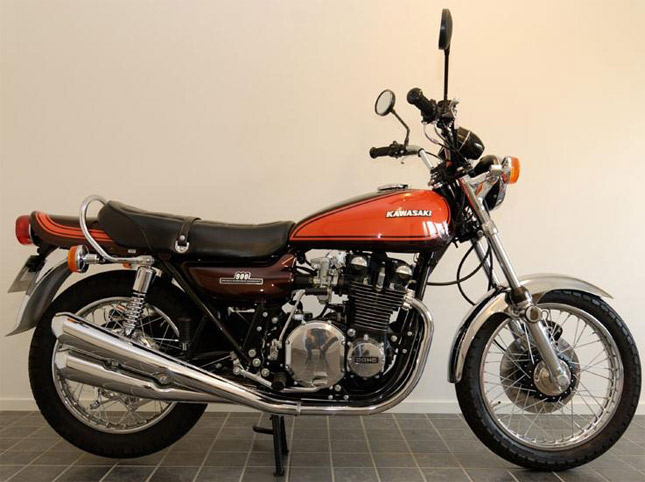 The Kawasaki Z1 was created under the project name "New York Steak". In the late 1960s Kawasaki, as of now a set up maker of two-stroke cruisers, had started prototyping a 750 cc four-cylinder four-stroke bikes working with Mc Farlane Design in 1969 to build up the bikes overall appearance. At the point when Honda acquainted the CB750 with the business sector to start with, Kawasaki put off the Z1's release until its displacement could be increased to 903 cc and the bike could be showcased in the 1000cc-class.
The Kawasaki Z1 was created under the project name "New York Steak". In the late 1960s Kawasaki, as of now a set up maker of two-stroke cruisers, had started prototyping a 750 cc four-cylinder four-stroke bikes working with Mc Farlane Design in 1969 to build up the bikes overall appearance. At the point when Honda acquainted the CB750 with the business sector to start with, Kawasaki put off the Z1's release until its displacement could be increased to 903 cc and the bike could be showcased in the 1000cc-class.
READ MORE: Honda CB 750- Rise Of The Superbike From The East
For the UK and Europe, Kawasaki delivered the Z1 in two shading plans. It is hard to express the state of Kawasaki depiction of the colour schemes on the grounds that some of it is by all accounts lost in interpretation crosswise over different reports at the time.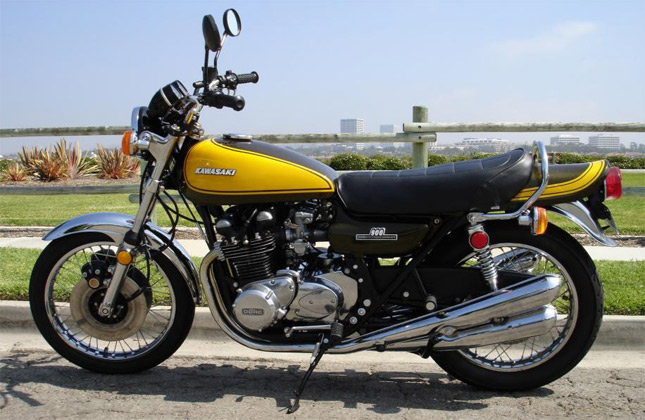 With more power than the CB, the Z1 was the superbike king on both the road and the track for years to come posting numerous speed records and track victories.
With more power than the CB, the Z1 was the superbike king on both the road and the track for years to come posting numerous speed records and track victories.
 The Z1 included full instrumentation and an electric begin, delivered 82 bhp and had a maximum speed of 130 mph (210 km/hr). It met with positive reviews from the bike press, who lauded its smoothness, damped vibration, easy-starting (kick-start and electric were both available), straight-line stability and linear acceleration. Steering was precise and the bike handled well, but testers said that the bike's chain and rear tire had a tendency to get eaten up rapidly.
The Z1 included full instrumentation and an electric begin, delivered 82 bhp and had a maximum speed of 130 mph (210 km/hr). It met with positive reviews from the bike press, who lauded its smoothness, damped vibration, easy-starting (kick-start and electric were both available), straight-line stability and linear acceleration. Steering was precise and the bike handled well, but testers said that the bike's chain and rear tire had a tendency to get eaten up rapidly.
The Z1 was honored the MCN 'Machine of the Year' award every year from 1973 to 1976 (an award coming about because of a readers' opinion survey kept running by UK weekly publication Motorcycle News). The Society of Automotive Engineers of Japan (Japanese) incorporates the 1972 Z1 as one of their 240 Landmarks of Japanese Automotive Technology.
The four into four exhaust system was an artistic masterpiece and was one of the Z1's most striking features. Each silencer was welded to its relevant down-pipe before being chrome plated. Design Changes:
Design Changes:
The fundamental design of the Z1 remained moderately unaltered until 1975, when the 903 cc "Z1-B" was presented, with changes including power yield, enhanced suspension, a stiffer casing, deleted automatic chain oiler, revised styling (basically paint plot and side spread terminology), and enhanced braking.
Follow-up Series:
In 1976 the Z1 was replaced by the Kawasaki KZ900, called Z900 in some countries. This was succeeded by the 1977 Kawasaki KZ1000 ("Z1000") and Kawasaki Z1000 Z1-R, and in 1984 by the Kawasaki Z1100R.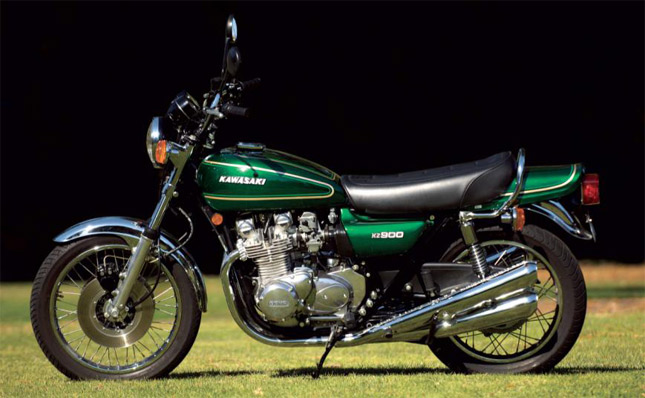
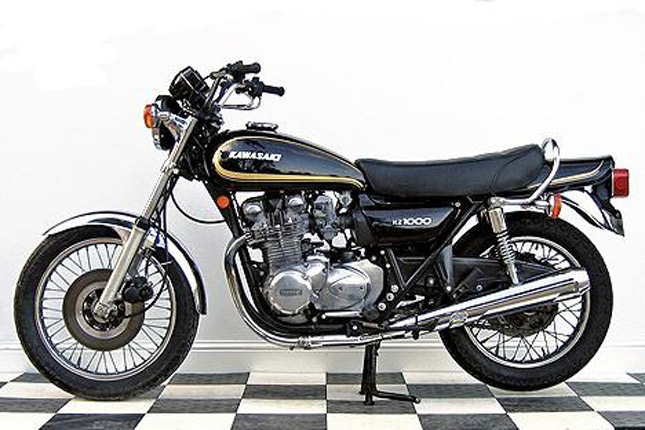

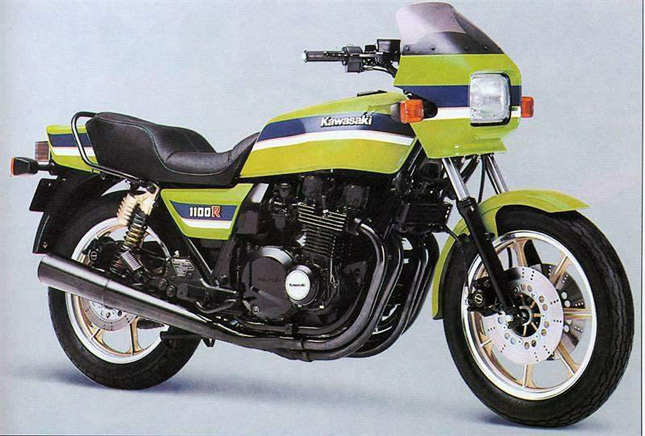
The big Kawasaki may have had questionable handling and minimal rakes, but its powerhouse engine was superbike 'top-dog' and remained the basis of numerous variants up to 1100cc for over 10 years.
Picture Credits:
bikeexif.com
motorcyclephotooftheday.com
en.wikipedia.org
vintagebike.co.uk
By: Rakshit Shastry
 The Kawasaki Z1 was created under the project name "New York Steak". In the late 1960s Kawasaki, as of now a set up maker of two-stroke cruisers, had started prototyping a 750 cc four-cylinder four-stroke bikes working with Mc Farlane Design in 1969 to build up the bikes overall appearance. At the point when Honda acquainted the CB750 with the business sector to start with, Kawasaki put off the Z1's release until its displacement could be increased to 903 cc and the bike could be showcased in the 1000cc-class.
The Kawasaki Z1 was created under the project name "New York Steak". In the late 1960s Kawasaki, as of now a set up maker of two-stroke cruisers, had started prototyping a 750 cc four-cylinder four-stroke bikes working with Mc Farlane Design in 1969 to build up the bikes overall appearance. At the point when Honda acquainted the CB750 with the business sector to start with, Kawasaki put off the Z1's release until its displacement could be increased to 903 cc and the bike could be showcased in the 1000cc-class.READ MORE: Honda CB 750- Rise Of The Superbike From The East
For the UK and Europe, Kawasaki delivered the Z1 in two shading plans. It is hard to express the state of Kawasaki depiction of the colour schemes on the grounds that some of it is by all accounts lost in interpretation crosswise over different reports at the time.
 With more power than the CB, the Z1 was the superbike king on both the road and the track for years to come posting numerous speed records and track victories.
With more power than the CB, the Z1 was the superbike king on both the road and the track for years to come posting numerous speed records and track victories.
 The Z1 included full instrumentation and an electric begin, delivered 82 bhp and had a maximum speed of 130 mph (210 km/hr). It met with positive reviews from the bike press, who lauded its smoothness, damped vibration, easy-starting (kick-start and electric were both available), straight-line stability and linear acceleration. Steering was precise and the bike handled well, but testers said that the bike's chain and rear tire had a tendency to get eaten up rapidly.
The Z1 included full instrumentation and an electric begin, delivered 82 bhp and had a maximum speed of 130 mph (210 km/hr). It met with positive reviews from the bike press, who lauded its smoothness, damped vibration, easy-starting (kick-start and electric were both available), straight-line stability and linear acceleration. Steering was precise and the bike handled well, but testers said that the bike's chain and rear tire had a tendency to get eaten up rapidly.The Z1 was honored the MCN 'Machine of the Year' award every year from 1973 to 1976 (an award coming about because of a readers' opinion survey kept running by UK weekly publication Motorcycle News). The Society of Automotive Engineers of Japan (Japanese) incorporates the 1972 Z1 as one of their 240 Landmarks of Japanese Automotive Technology.

*** Four Into Four Exhaust
The four into four exhaust system was an artistic masterpiece and was one of the Z1's most striking features. Each silencer was welded to its relevant down-pipe before being chrome plated.
 Design Changes:
Design Changes:The fundamental design of the Z1 remained moderately unaltered until 1975, when the 903 cc "Z1-B" was presented, with changes including power yield, enhanced suspension, a stiffer casing, deleted automatic chain oiler, revised styling (basically paint plot and side spread terminology), and enhanced braking.
Follow-up Series:
In 1976 the Z1 was replaced by the Kawasaki KZ900, called Z900 in some countries. This was succeeded by the 1977 Kawasaki KZ1000 ("Z1000") and Kawasaki Z1000 Z1-R, and in 1984 by the Kawasaki Z1100R.

*** Kawasaki KZ900

*** Kawasaki KZ1000

*** Kawasaki Z1000 Z1-R

*** Kawasaki Z1100-R
The big Kawasaki may have had questionable handling and minimal rakes, but its powerhouse engine was superbike 'top-dog' and remained the basis of numerous variants up to 1100cc for over 10 years.
Picture Credits:
bikeexif.com
motorcyclephotooftheday.com
en.wikipedia.org
vintagebike.co.uk
By: Rakshit Shastry











